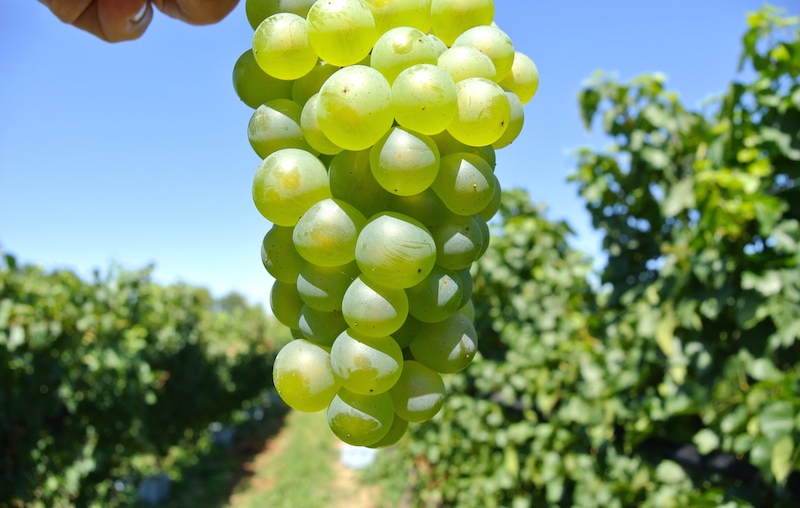
By Rick VanSickle
It’s another stinkin’ hot day during the endless summer of 2016 in Ontario; it’s well into the 30s with a low, stifling haze of humidity cutting through what little clothing one can get away with on this vineyard jaunt. I am sweating profusely.
Note: This story was originally published in Quench wine magazine but has been updated to include new information.
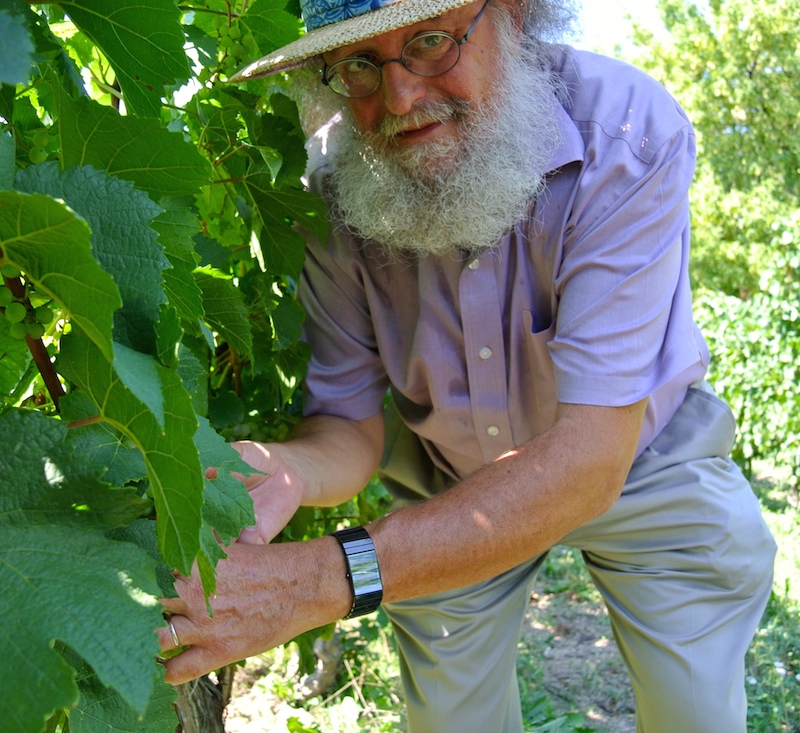
Stratus Vineyards winemaker J.L. Groux, above, smartly shaded under a wide-brimmed straw hat and looking rather cool and annoyingly unbothered, gently kneels down to reveal bunches of tiny green Chardonnay grapes shielded by a full canopy of leaves on this mid-August day. “They will ripen quickly now,” he declares, predicting (correctly, by the way) a Labour Day weekend harvest.
That’s an early pick for most Chardonnay in Niagara, but just about ideal for Groux’s little known sparkling program that began its journey such a long time ago. The grapes we are looking at today won’t be in your flute for another seven years “at least,” says Groux. They will be harvested, pressed, fermented and left to silently rest on their own dead yeast cells for seven years, gaining complexity and flavours on their slow march to becoming Niagara’s newest traditionally-made sparkling blanc de blancs (100% Chardonnay), vintage 2016. The base wine will slumber beside five other vintages of Stratus sparkling wine with the first one, the 2011, scheduled for release in 2018.
This kind of work is not for the faint of heart or those who need to see the fruit of their labour turned quickly into cash.
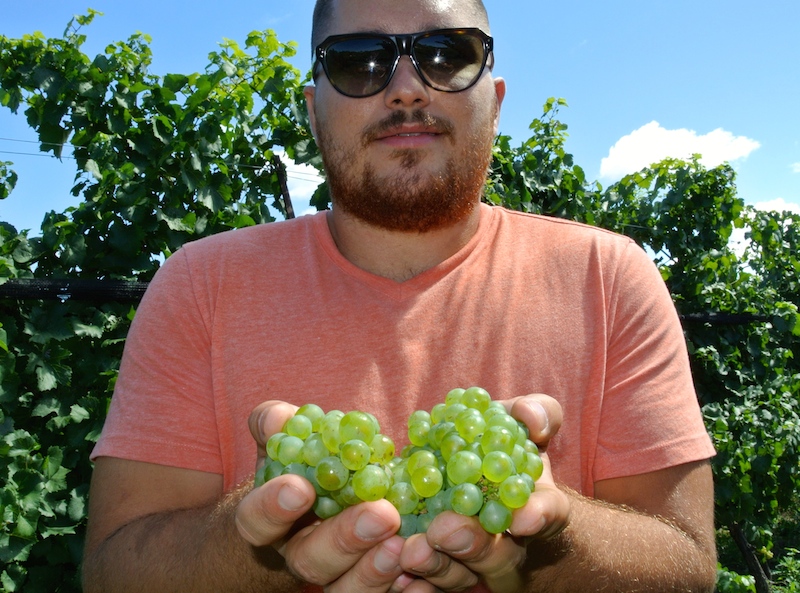
Groux is in that most unique position with Niagara sparkling wines: He not only helped pioneer the modern era of sparkling wines in Ontario as the winemaker at Trius (then called Hillebrand) in 1988 when he knew of only one other traditionally-made sparkler being made (Chateau des Charmes), but he is also part of the Second Coming of Ontario sparkling winemakers, in fact, Canadian winemakers, re-energizing the craft of sparkling wines — and in particular, traditionally made, or Methode Champenoise, made famous in the vineyards of Champagne, France, in the early 1600s.
Champagne wasn’t the first region to produce a sparkling wine; that distinction goes to Blanquette de Limoux and the Benedictine Monks in the Abbey of Saint-Hilaire near Carcassone in 1531. They achieved those delightful bubbles by bottling the wine before the initial fermentation had ended, now called the ancestral method.
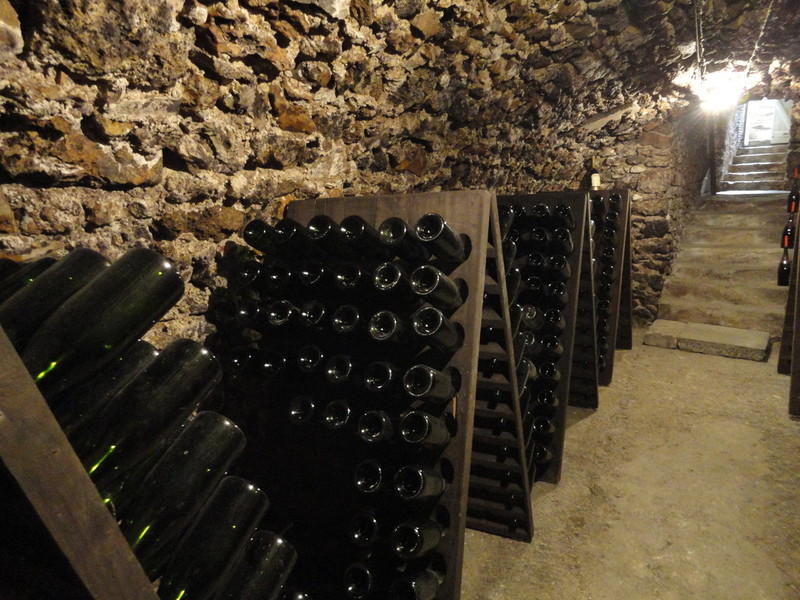
The Champagne method, which requires the addition of sugar to a finished wine to create a second fermentation in the bottle, was discovered over a century later but was not popularized (because glass makers could not prevent the bottles from exploding due to the pressure) until the mid-1800s. With a bottle finally created to withstand the violent explosion, production of traditionally made Champagne went from 300,000 bottles in the early 1800s to 20 million bottles by 1850. Today that number is closer to 350 million bottles.
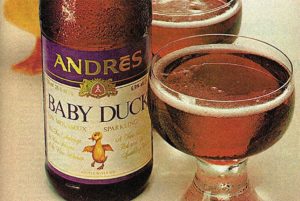 Ontario’s sparkling wine production has a slightly less illustrious past. Without going all the way back to those Baby Duck days, 1988 is a good place to start with the beginning of quality sparkling wines in Ontario, with both Hillebrand (now called Trius) and Chateau des Charmes making traditionally-made sparkling wines from Chardonnay and Pinot grapes. Groux riddled everything by hand, built a specially designed underground cellar for the wines and the sparkling program grew quickly to 10,000 bottles. With the Millennium on the horizon, production ramped up to 100,000 bottles for the Year 2000 bash and suddenly corks were popping all over Niagara and the category began taking off.
Ontario’s sparkling wine production has a slightly less illustrious past. Without going all the way back to those Baby Duck days, 1988 is a good place to start with the beginning of quality sparkling wines in Ontario, with both Hillebrand (now called Trius) and Chateau des Charmes making traditionally-made sparkling wines from Chardonnay and Pinot grapes. Groux riddled everything by hand, built a specially designed underground cellar for the wines and the sparkling program grew quickly to 10,000 bottles. With the Millennium on the horizon, production ramped up to 100,000 bottles for the Year 2000 bash and suddenly corks were popping all over Niagara and the category began taking off.
From a handful of wineries making sparkling wine pre-2000, that number stands at 55 Ontario wineries now in the game when you include those which have a base wine sitting on the lees, such as Stratus, waiting for the magic to happen.
As with all the wines Groux makes, with meticulous blending and contemplation, his as yet unnamed Stratus sparkling wine — 150 cases maximum — has been thoroughly thought out. He began growing and researching “sparkling” grapes in 2006, severing off a portion of the Chardonnay vineyard and leaving the canopy on the vines to shade the grapes and picking a full month before the other Chardonnay grapes. He didn’t reveal his first official base wine, the 2011 vintage, to the Stratus owners until 2013 and “they loved it,” says Groux. No one outside Groux’s tight circle has tried the wine (he wouldn’t even let me see it!).
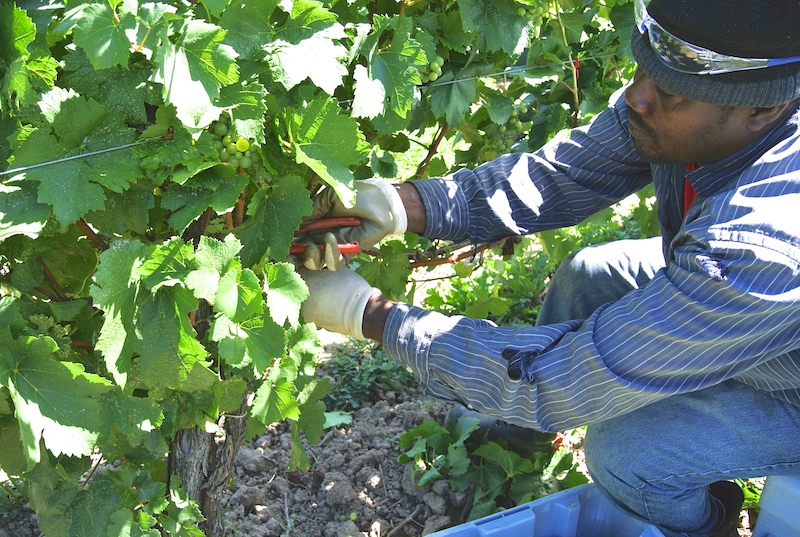
Seven years on the lees is a long time, so look for a complex sparkling wine made in the traditional style but fully and completely a “Niagara blanc de blancs,” he says, with a nod to Champagne and some of the methods they use to grow and make what is arguably the world’s greatest expression of bubbly. It begins with the grapes, picked early with low brix (sugar) and bracing acidity in what Groux calls “low flavours. I don’t want tropical fruit or lime. The aromatics will build on the lees. We will make a style that’s complex and interesting. But we are in Niagara, it will always be Niagara.”
What Groux means, and it’s a sentiment shared throughout Ontario: You can learn from Champagne, you can take your cue from Champagne, but Niagara sparkling will never be Champagne, that’s just silly.
Few in Ontario, or even Canada, have the luxury of growing grapes specifically for sparkling wines. More often than not, the vintage dictates where your Pinot Noir or Chardonnay grapes are headed, and it’s not always going to be destined for sparkling wine.
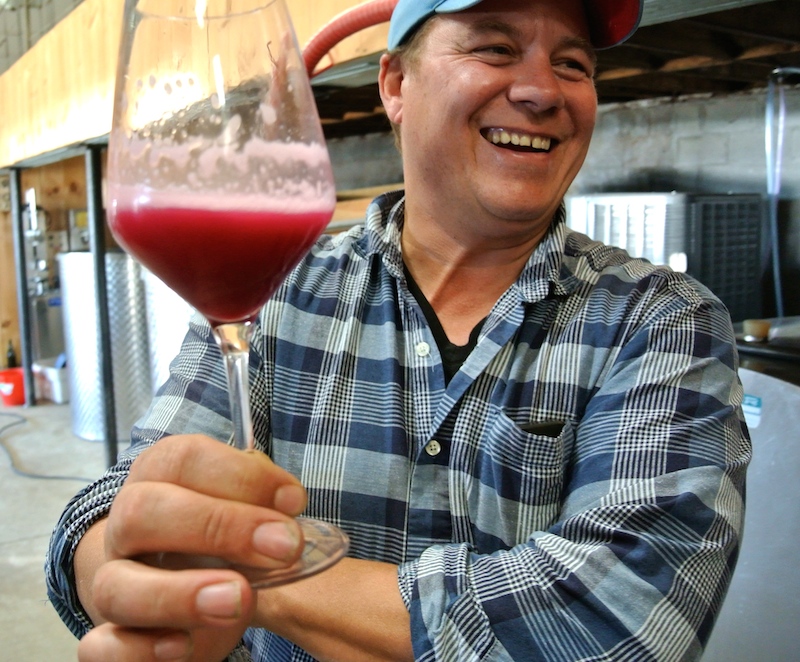
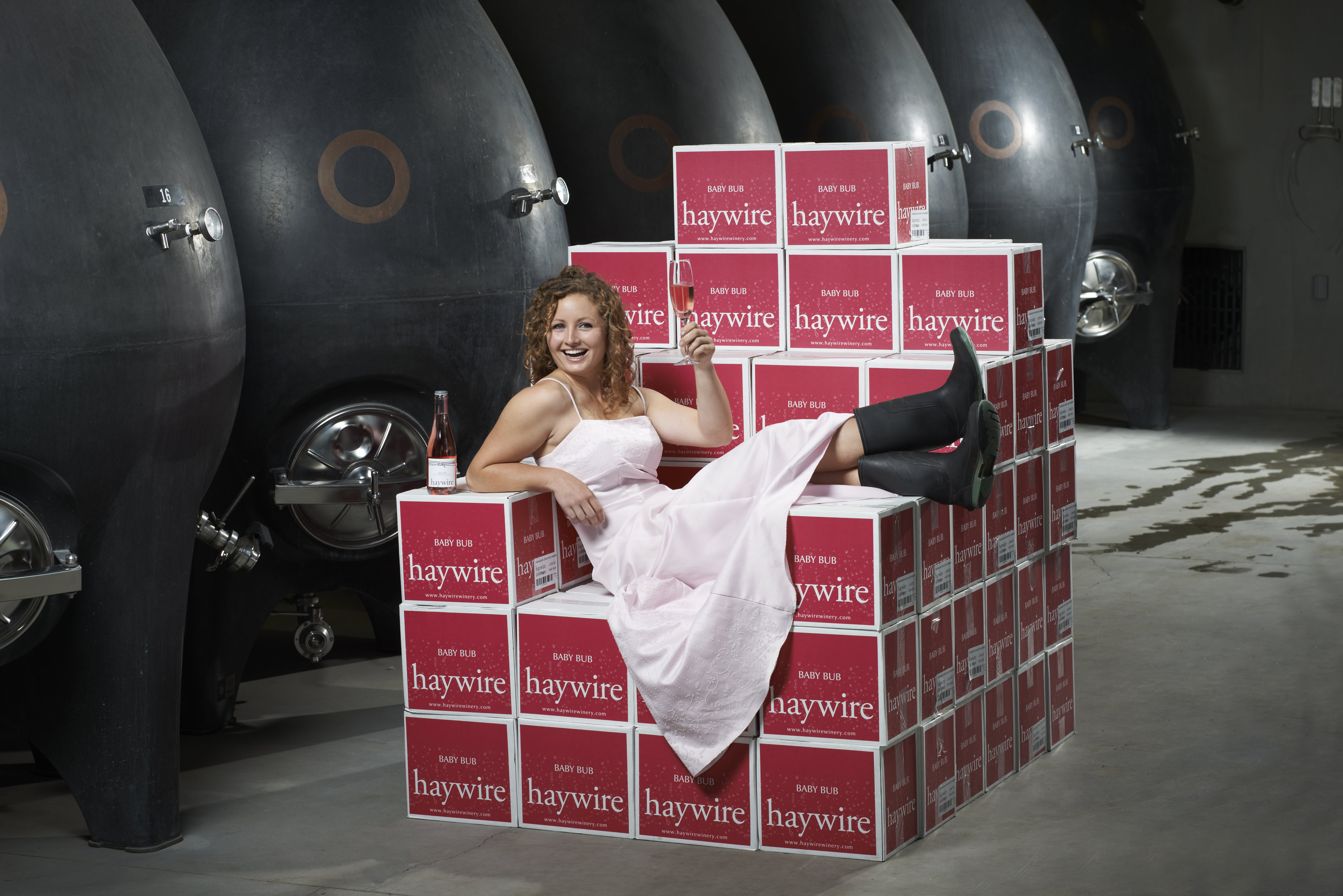
Only three wineries in Canada that I know of dedicate the majority of their production to sparkling wines — Hinterland Wine Company in Prince Edward County, Bella Wines in the Okanagan Valley and Benjamin Bridge in Nova Scotia. A handful of others have embarked on (or built on) an aggressive program of traditionally-made, vintage-dated sparkling wines with extended lees aging in various styles (notably Chateau des Charmes, Henry of Pelham, 13th Street Winery, Cave Spring Cellars, Flat Rock Cellars, Jackson Triggs and Peller Estates in Niagara, and Haywire, Blue Mountain, Sumac Ridge and Summerhill in B.C.)
The fact is, the vast majority of wineries making sparkling wine have one or two examples made in the fruity and forward charmat or cuve close methods, delicious, yes, but more intended for a domestic market than turning heads internationally.
 Eugene Mlynczyk, a Master of Wine and luxury portfolio manager for Constellation Brands Canada, sees a genuine opportunity for sparkling wines in Canada. He says the number of producers of sparkling wine and volume produced doubled between 2004-2014. But the growth isn’t fast enough if Canadian producers want to keep up with popularity around the world.
Eugene Mlynczyk, a Master of Wine and luxury portfolio manager for Constellation Brands Canada, sees a genuine opportunity for sparkling wines in Canada. He says the number of producers of sparkling wine and volume produced doubled between 2004-2014. But the growth isn’t fast enough if Canadian producers want to keep up with popularity around the world.
While Canadian sparkling wines account for 3-4% share of all wine produced, other countries have escalated that to 7-10% market share.
Mlynczyk, who wrote a research paper on sparkling wine in Canada for his Master of Wine certificate, says: “The industry believes they should focus on sparkling as part of their program. But you can’t cowboy sparkling wine. You can’t ride by the seat of your pants.”
There needs to be a “critical mass” of wineries growing grapes specifically for sparkling wines, he says. “Don’t make this an after-thought, that won’t grow the category.”
The competition is tough, says Mlynczyk, with Cremant, Champagne, Prosecco, California and Cava sparkling wines commanding the biggest share of the pie on wine store shelves in Canada.
All but California in the above regions mentioned are closely regulated for what they can and can’t do with their sparkling wines.
In the new world, it’s a little more complicated (or less complicated, depending on your point of view). Though VQA has stated rules for the various styles (which were under review at the time of this writing) that are made in both Ontario and B.C., it’s up to the winery to decide what kind of sparkling wine they want to pursue — and that’s drawing from a wide range of styles, from the method to grapes used in the cuvee to finishing the wine.
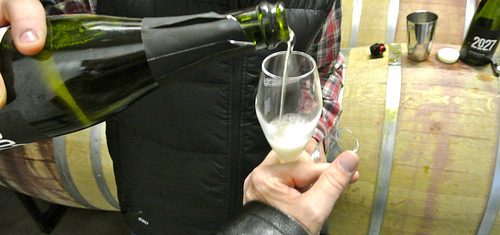
The wine industry believes strongly in traditional method over charmat but winemakers want the freedom to produce their own style,” says Mlynczyk. “Producers don’t want regulation on one style over the other.”
That’s what the New World is all about. Anything goes, and with that, there’s good and bad.
“Some producers want flexibility, while some feel there should be regulation,” he says.
And therein lies the rub. You go to one winery and they show you a complex and elegant traditionally-made, vintage-dated blanc de blancs with seven years of lees aging and right next door they show you a simple, fruity charmat made with non-traditional grapes that has lots of sizzle but no stuffing. It can be confusing for consumers.
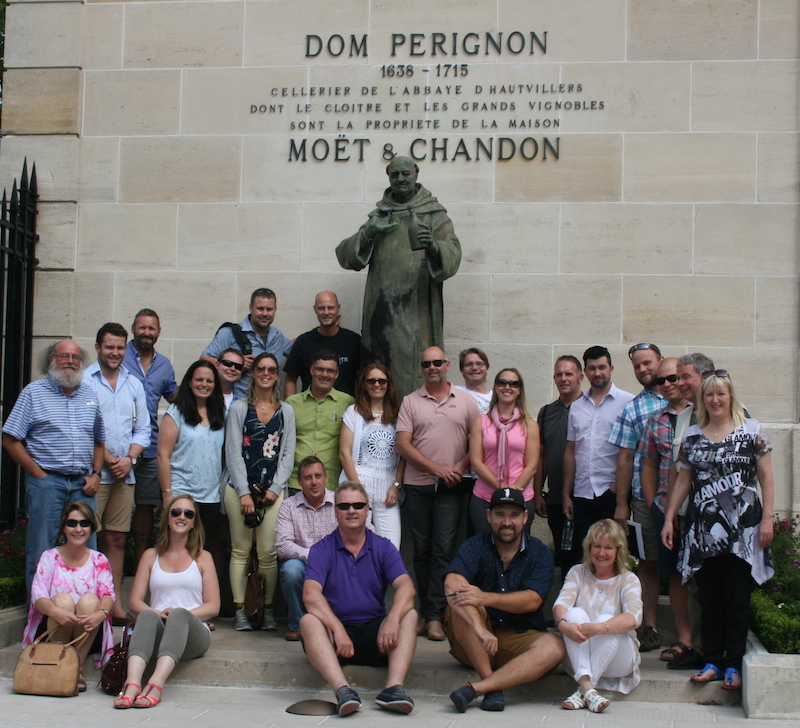
Perhaps the future, the map that will determine Canada’s sparkling wine destiny, is in the hands of a dedicated group of winemakers who belong to the elite “Fizz Club” established in 2013 by Brock University’s Cool Climate Oenology and Viticulture Institute (CCOVI) in St. Catharines.
The Fizz Club was Dr. Belinda Kemp’s creation. As the senior scientist in oenology at the university, Kemp wanted to create a “sparkling wine support network” based on sharing knowledge among winemakers. The club has the maximum number of 40 winemakers subscribed, all who now produce sparkling wines or have one in the works, and the course was full for the recently completed December session which is focused on traditionally made sparkling wines.
“I wanted to get all the sparkling winemakers together to show them what was happening in the rest of the world,” Kemp says. To that end, 26 Ontario winemakers (including Groux) and two scientists (including Kemp) travelled to Champagne this past summer on a technical and educational journey to learn from winemakers there exactly how they achieve greatness with their bubbles.
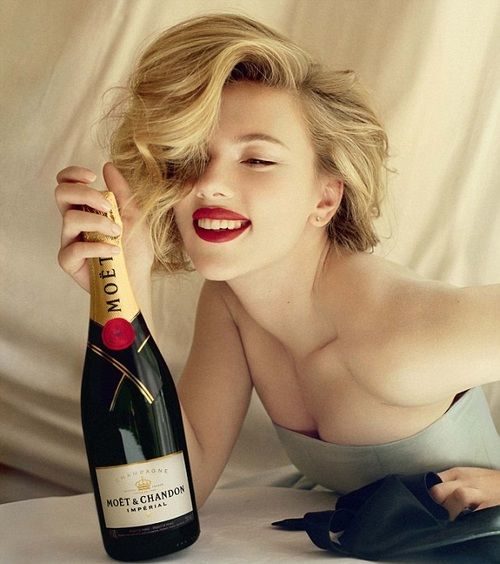 The trip included intense visits to such revered houses as Taittinger, Moet et Chandon and Champagne Jacquinot and the lessons learned were invaluable, says Kemp. Everything from picking times and vineyard canopy, to specific grape clones that work best for sparkling wine, riddling, disgorging and dosage was covered.
The trip included intense visits to such revered houses as Taittinger, Moet et Chandon and Champagne Jacquinot and the lessons learned were invaluable, says Kemp. Everything from picking times and vineyard canopy, to specific grape clones that work best for sparkling wine, riddling, disgorging and dosage was covered.
One of the key elements of sparkling wine production, says Kemp, is how to treat the base wine. “In some camps, the base wines were being made like a still wine. You can’t do that,” she says. “There’s too much cleaning up of the wine; we need a bit more dirty winemaking in the base wine.”
It’s a key to making quality traditionally-made sparking that is not lost on J.L. Groux: “I’m doing everything the opposite of all my other wines.”
Change is coming. Canadian wineries are ready to take fizz to the next level.
“The quality is rapidly increasing,” says Kemp. “But we’re just scratching the surface. It’s a really exciting time that will show in the wines in the next few years.”
The future does indeed seem bright for sparkling wines. At the December meeting of the Fizz Club at Brock, who met before this original story was published, rosé sparkling wines were on the agenda.
The Fizz Club has come into its own at a time when both consumption and production of sparkling wine is rising in Ontario.
“Sparkling wine is not just for celebrations anymore,” said member Emma Garner, winemaker at Thirty Bench, who bottled her first traditionally made Riesling last year.
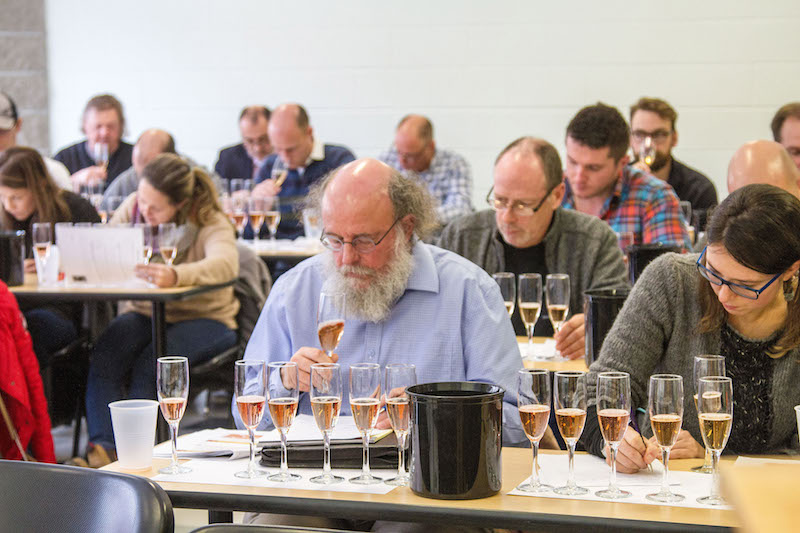
“Ontario wineries clearly have everything it takes to make great rosé and sparkling wines and to craft great brands,” said Astrid Brummer, category manager for Ontario wines at the LCBO. “However, the fact that VQA sales represent just 3.5 per cent of overall sparkling sales tells me that there is enormous opportunity for Ontario brands to steal share from the luxury Champagne or super-cool Prosecco segments.”
Grabbing a larger share of the market is typically what Fizz Club conversations focus on. For Marc Théberge, a sparkling winemaker from Quebec, attending Fizz Club gave him an opportunity to hear insight into Ontario trends.
“It’s always fun to hear different perspectives,” Théberge said. “It was nice to be able to see production trends in Ontario rosé and the differences between our provinces.”
Scientists like Kemp also realize a gathering like Fizz Club is something special.
“I’ve never heard of this type of winemakers-only forum — where they spend a day focusing on one wine style, sharing ideas and real-time research findings — happening anywhere else,” she said.
As of this writing, another key Niagara winery, Southbrook Vineyard in Niagara-on-the-Lake, revealed to me that it has a totally natural (zero sulphur added) organic/biodynamic ancestral method (primary fermentation in the bottle) bubbly being released in the near future.
Yes, indeed, the future looks sparkling for wine lovers in Canada. Here’s a toast to more bubbles!





Comment here